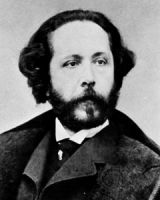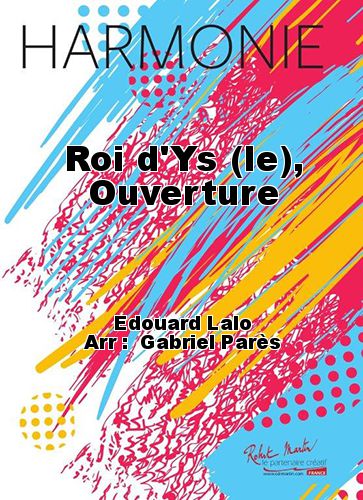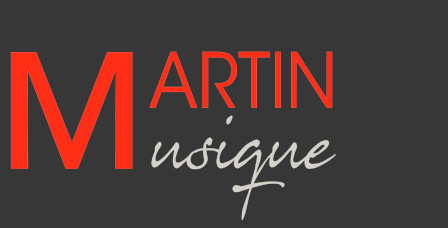Edouard LALO

Edouard-Victoire-Antoine Lalo was a French composer born in Lille, at No. 10 rue des Tours, January 27, 1823, and died in Paris April 22, 1892. It lies in the cemetery of Pere Lachaise in Paris. His family is not of Spanish origin, contrary to what would make people believe his son, Pierre Lalo. The latter was a monarchist, while his father was a staunch Republican, also relatively antimilitarist. Contents [hide] Edouard Lalo came at the age of ten years at the Conservatory of Lille where he learned the violin and the cello perhaps, under the direction of professors Müller and Baumann, then at the age of sixteen, went to Paris to continue his musical studies, against the wishes of his father. There was as a violin teacher Pierre Baillot, then F. -A. Hanabeck. In 1843 the pianist Julius Schulhoff introduced him to the composition. He perfected himself in contact with J. -E. Crèvecoeur (second Grand Prix de Rome). His earliest known compositions, songs accompanied by piano, dating from 1848, during which he submitted two of his scores to Hector Berlioz. He became of friendship with the violinist Jules Armingaud, his only confidant, and with composer Pablo de Sarasate. Among his friends there are also the painter Auguste Delacroix that he should not be confused, as Pierre Lalo wanted, with the illustrious Eugene Delacroix. Lalo never entered the Paris Conservatoire, either as student or as teacher. He participated in only two selection boards in 1876. While admiring the Wagnerian orchestra, Lalo forced himself to follow his own personality. He received several times the support of Charles Gounod, who appreciated his music. He was the viola and second violin Quartet Armengaud from the foundation of it in 1856. Edouard Lalo lived in poverty, particularly in Puteaux with his first wife, until 1865. Widowed in 1864, he married the mezzo-soprano Julie-Marie-Victoire Bernier Maligny and lived more comfortably in Paris. It was music room at his house every Friday night and attended other private musical salons of the capital. Lalo was a reserved and reluctant to talk about himself. Many of his letters written and received were destroyed. It consisted of hard instrumental melodies and symphonies that were more appreciated abroad than in France. Destroyed except two symphonies, he seems, by the composer, his first compositions were for a small staff vocal or instrumental, including six popular Romances (1849), then six Songs, on poems by Victor Hugo ( 1856), two Piano Trios (1850 and 1852) and various pieces for violin and piano. In 1856, he participated, first as a violist in the creation of Armingaud Quartet, whose ambition was to promote the works of German masters. Four years later, he composed his own String Quartet. In 1866, he finished Fiesco, his first opera, which was never brought to the stage but to feed other works, such as the Divertissement for orchestra (1872) or the Symphony in G minor (1886). The 1870s were particularly productive: in addition to the Violin Concerto (1873) and the Cello Concerto (1877), Lalo wrote his two most famous opus, the Symphonie espagnole (1874) and the opera Le Roi d'Ys (1875 - 1881). He gained recognition with the Symphonie espagnole, which is actually a violin concerto in five movements, composition created for the flamboyant virtuoso violinist Sarasate and still very popular. His Cello Concerto, although less appreciated, is a work very interesting. As for the King of Ys, it was created much later, but triumphantly in 1888. One year after this success, Edouard Lalo was promoted to Officer of the Legion of Honour on 1 January 1889. Among his major compositions, ballet Namouna (1882) was commissioned by the Paris Opera and choreographed by Lucien Petipa. The music received mixed between boos and public enthusiasm of colleagues such as Debussy, Fauré and Chabrier. It s directory is maintained in the form of orchestral suites. About Namouna, Claude Debussy wrote: "Among too many stupid ballets, there was a way to head-of THEREFOR: the Edouard Lalo Namouna. Indescribable ferocity deaf buried her so deep that nobody talks about more. It's sad for music. ". Google machine translation: Edouard LALO's original bio |
 |
| ||
| Edouard LALO Arr : Gabriel PARÈS Publisher : Robert Martin Genre : Orchestra Group : Wind band Style & options : Operas, light operas, operettes |
Set Wind Band (LALO00795-BA) : € 116,62 Full score (LALO00795-CO) : € 39,14 |
||
 |
| ||
| Edouard LALO Arr : Piet STALMEIER Publisher : Molenaar Genre : Orchestra Group : Wind band |
Set Wind Band (MOL012152080-BA) : € 169,52 | ||
